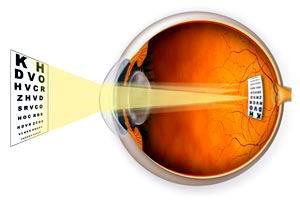
Astigmatism is a very common form of refraction, almost everyone has, more common than myopia, hyperopia, but there are relatively few people who really need to wear astigmatic lenses. A qualified optometrist must have a correct and scientific optometry method to accurately and quickly detect astigmatism. If the fitting of astigmatism is unscientific and inaccurate, customers will experience severe visual fatigue, eye acid, dry eyes, eye swelling, dizziness, and tearing.

The meaning and classification of astigmatism
First, the meaning of astigmatism
Since the refractive power of each meridian of the eyeball refractive system is different, a refractive state in which parallel rays enter the eye and cannot form a focus is called astigmatism.
Second, the classification of astigmatism
According to the regularity of the refractive warp, it is divided into regular astigmatism and irregular astigmatism.
1. Regular astigmatism:
The curvature of the cornea and lens surface are not equal, but there are certain rules. There are two main meridians that are the strongest and weakest perpendicular to each other. The light passes through the two main meridians to form two focal lines that are perpendicular to each other. This astigmatism is called For regular astigmatism, it can be corrected with a cylinder.
(1) Regular astigmatism is divided according to the positional relationship of the two main meridians focusing on the retina:
1) Simple myopic astigmatism: one main meridian is focused on the retina, and the other main meridian is focused on the retina;
2) Simple hyperopic astigmatism: one main meridian is focused on the retina, and the other main meridian is focused on the retina;
3) Composite myopic astigmatism: the two main meridians are focused in front of the retina, but the focus position is different before and after;
4) Compound hyperopic astigmatism: the two main meridians are focused behind the retina, but the focus position is different before and after;
5) Mixed astigmatism: one main meridian is focused on the retina and the other main meridian is focused on the retina.

(2) According to the vertical main warp and the horizontal main warp diopter strength, regular astigmatism can be divided into: compliant astigmatism, inverse astigmatism and oblique astigmatism.
1) Regulatory astigmatism: The two main meridians of the astigmatic eye are located in the vertical direction and the horizontal direction (±30°), respectively, and the vertical main meridian refractive power is greater than the horizontal main meridian.
2) Inverse astigmatism: The two main meridians of the astigmatic eye are located in the vertical direction and the horizontal direction (±30°), respectively, and the horizontal main meridian refractive power is larger than the vertical main meridian.
3) Oblique astigmatism: The two main meridians are located at 45° (±15°) and 135° (±15°) respectively.